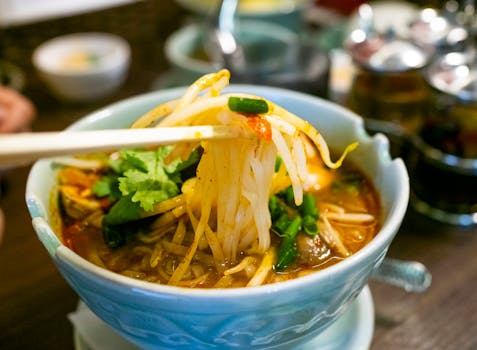Spa Traditions Around the World: From Japanese Onsen to Turkish Hammams
If you are a fan of relaxation and indulgence, you may have heard of the luxurious spa traditions around the world. From the ancient Roman baths to the modern-day sources, spas have been known for their rejuvenating and healing properties. But did you know that different countries have their unique spa traditions? Each with its own special touch and cultural significance? In this article, we’ll take a deep dive into some of the most fascinating spa traditions around the world, from Japanese Onsen to Turkish Hammams. So sit back, relax, and get ready for a spa tour like no other!
The Japanese Onsen Experience
Japan is known for its many cultural traditions and the Onsen is one that has stood the test of time. Onsen, derived from ‘oo’ (hot water) and ‘sen’ (springs), refers to natural hot springs that can be found throughout the country. These hot springs are believed to have healing properties and have been used for centuries by the Japanese to relax and rejuvenate. Traditional Japanese Onsen experiences often involve a communal bathing experience, where you can soak in mineral-rich waters while admiring the beautiful natural surroundings.
Etiquette and Customs in Japanese Onsen
Visitors to Japanese Onsens are expected to follow a set of customs and etiquette to fully immerse themselves in the experience. One of the most important rules is to bathe before entering the Onsen. This is seen as a gesture of respect towards yourself and others who will be sharing the hot spring. Once in the Onsen, it is customary to cover one’s private parts with a towel. Also, it is considered rude to enter a hot spring when you are dirty or have any open wounds.
In addition to these customs, many Onsens also have special rules depending on the location and type of hot spring. For example, some Onsens might require visitors to take their shoes off or wear a special robe while others may have designated areas for men and women.
The Splendor of Moroccan Hammams
Moroccan Hammams, also known as Turkish Hammams, are famously known in the Western world for their luxurious and relaxing experience. The word Hammam is derived from Arabic and means “spreader of warmth”, and that is exactly what this spa tradition is all about. The Moroccan Hammam experience is centered around steam, scrubbing, and massage, and is a celebration of the senses.
The Hammam Experience
The first step when entering a Hammam is to enter a steam room, where the heat and steam will open up your pores and prepare your skin for exfoliation. This is followed by a vigorous scrubbing with a kessa (glove) and black soap, made of crushed olives and eucalyptus oil. This step is not just beneficial for the skin, but also improves blood circulation and provides relaxation of the muscles.
The next step is the famous Ghassoul clay treatment, where a thick layer of natural clay is applied onto the skin and left to dry for a few minutes. The clay is then washed off, leaving behind smooth and radiant skin. The final step in the Hammam experience is a relaxing massage with aromatic oils, leaving you feeling rejuvenated both inside and out.
Indulging in the Indian Ayurvedic Spa Culture
Ayurvedic spas are a popular form of traditional medicine in India, focusing on the balance between mind, body, and spirit. The spa treatments in Ayurvedic culture are based on ancient Indian medicinal practices, and the focus is not just on the physical, but also on the emotional and spiritual well-being of a person.
Ayurvedic Spa Treatments
The treatments in Ayurvedic spas are highly personalized, taking into account each individual’s unique body constitution or ‘dosha’. Regular spa-goers swear by the results of these treatments, which include massages with herbal oils, herbal steam baths, and body scrubs made from natural ingredients. Ayurvedic spas also place great emphasis on diet, and it is common for visitors to be prescribed a specific meal plan to aid in the treatment process.
Uncovering the Healing Powers of Icelandic Geothermal Spas
Iceland is famous for its otherworldly landscapes and natural wonders, including its geothermal pools and spas. The island sits on top of a geologically active region, resulting in the presence of many hot springs and spas. These spas are known for their healing properties and are a popular destination for both tourists and locals.
Geothermal Spa Benefits
The warm waters of the geothermal spas provide not only relaxation but also various health benefits. The water is rich in minerals like silica, sulfur, and chloride, known for their healing and rejuvenating properties. These minerals can help improve skin conditions, relieve muscle pain, and boost the immune system. Many visitors also swear by the stress-relieving benefits of soaking in the warm waters amidst the breathtaking Icelandic landscape.
Spa traditions are an important part of various cultures around the world. They not only provide physical relaxation and rejuvenation but also offer a unique glimpse into the history and customs of a country. Whether you prefer the ancient traditions of Japanese Onsens or the luxurious experience of Moroccan Hammams, one thing is for sure – a visit to any of these spas is a must for anyone looking to unwind and spoil themselves in the most indulgent ways possible!



